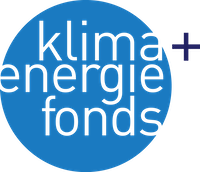print.PV Flexographic printing of photovoltaic power – Towards 0.3 €/W
Photovoltaic technology is one of the most attractive renewable energy sources as there is abundant and virtually unlimited supply of solar energy at zero cost. However, despite the recent decline in photovoltaic module prices there is a need to lower the price even further in order to make the technology cost competitive in comparison to other sources of energy. Going further, flexible photovoltaic thin-film modules, such as those based on CZTS, have emerged as a real alternative to current non-flexible PV modules as they use less material, are much lighter in comparison to conventional PV technology and can thus be integrated with different building materials and hence be adapted to become part of the architecture of a building.
The main aim of the project was to develop a process series which is feasible for a roll-to-roll production of CZTS monograin membranes at 40 m/min. At such high web-speeds the production costs of those membranes are considered to be cost competitive and CZTS monograin membranes should be able to be produced at costs below 0.3 €/Wp.
Ausgangssituation
At the beginning of the project the individual processes have been analyzed on their capability on achieving the targeted web-speeds and 4 of the 8 processes are identified to be critical.
To bring the production to the desired cost and throughput goals, new process steps had to be developed as well as new materials to be introduced. The evaluation of the modifications was within the framework of work package 1. All changes of materials and production parameters have been tested with active devices. The effect on the device quality has been evaluated in comparison with the solar cell performance of devices produced in a standard process.
Projektverlauf
The development efforts were divided into 8 work packages. Five work packages (WP2 – WP5) have been dedicated to the individual development areas. The evaluation of polymer films and test devices was done within a separate work package (WP1) in order to assure comparable results in all work packages. The results of the single process development of the individual work packages have been integrated on module level. This was done within work package 7.
The following results were achieved:
A roll-to-roll screen printing was tested at medium volume production and a feasible concept for high volume production was developed. Flexographic printing was identified to be not well suited for monograin production.
A new polymer (Dual-Cure) with pre-curing time of < 10 second was developed.
The printing technology applied (roll-to-roll screen printing) allowed the printing of film thicknesses with a variation of better than ± 1 μm. A film thickness of 10 µm was not feasible for the grain size of 50 µm which was available in the project (needs 20 µm). Tests with small amounts of small sized powder showed that 10 µm is a decent polymer thickness for 30 µm grain size.
• A high volume process based on electrostatic embedding was developed and tested. When testing the electrostatic embedding process an unexpected issue was identified: The contamination of the substrate foil by crystal powder at unwanted positions.
• A cleaning process for removing unwanted powder contamination was developed.
• A high volume process based on three funnel gravitational embedding was tested at medium web-speed and is feasible for high web-speeds.
A laser ablation process was developed from a first proof of concept to a high-speed demonstration on module level (30 seconds for an area of 20×20 cm²). Compared to the reference process the laser ablation resulted in more precise and homogeneous rear-side ablation.
A non-vacuum process (solution based) for depositing a transparent front contact was developed. The process was demonstrated on module level (20×20 cm²) and a concept for roll-to-roll integration was developed.
• On solar cell device level the substitution of silver by copper was successfully achieved. A transfer to module level was not achieved, and more research on the curing process was needed to be conducted.
A novel roll-to-roll technique based on atmospheric plasma deposition of copper was successfully tested for realizing „printed” Z-Contacts made of copper.
Ergebnisse
In summary, results generated in print.PV clearly show, that a high-throughput production of CZTS monograin membranes can be realized at low costs. The main aim of the project was achieved and the know-how for realizing all of the individual processes at a web-speed of 40 m/min is available now.
Moreover, a cost estimation of the processes developed in the print.PV project shows that the cost target of 0.3 €/Wp is realistic. As a result the project opened a roadmap for the photovoltaic and printing technology sector in Austria to integrate itself into a globally growing photovoltaic industry.
Steckbrief
-
Projektnummer84517
-
Koordinator
-
ProjektleitungRumman Syed, office@crystalsol.com
-
Partner
-
SchlagwörterPhotovoltaik
-
FörderprogrammEnergieforschung (e!MISSION)
-
Dauer07.2014 - 06.2017
-
Budget4.201.215 €


